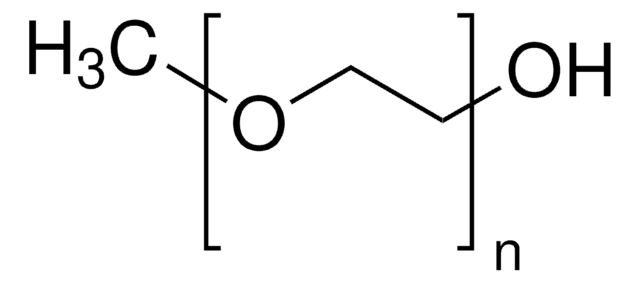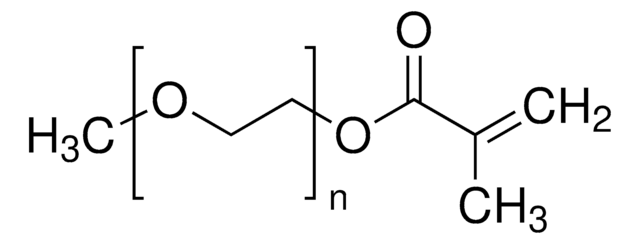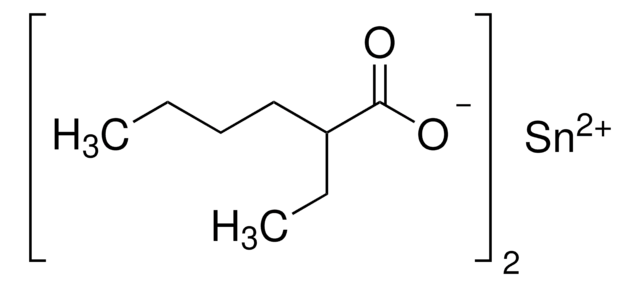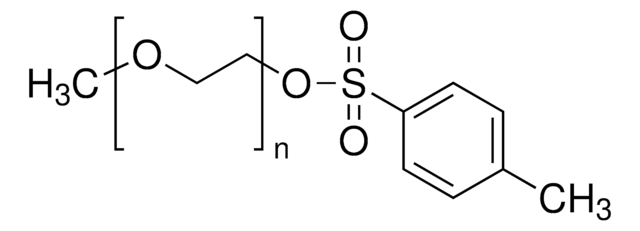202509
Poly(ethylene glycol) methyl ether
average Mn 2,000, methoxy, hydroxyl
Synonym(s):
Polyethylene glycol, Methoxy poly(ethylene glycol), Polyethylene glycol monomethyl ether, mPEG
About This Item
Recommended Products
Product Name
Poly(ethylene glycol) methyl ether, average Mn ~2,000
vapor density
>1 (vs air)
Quality Level
vapor pressure
0.05 mmHg ( 20 °C)
form
flakes (or pellets)
mol wt
average Mn ~2,000
viscosity
54.6 cSt(210 °F)(lit.)
transition temp
Tm 52 °C
functional group
hydroxyl
InChI
1S/C3H8O2/c1-5-3-2-4/h4H,2-3H2,1H3
InChI key
XNWFRZJHXBZDAG-UHFFFAOYSA-N
Looking for similar products? Visit Product Comparison Guide
Related Categories
General description
Application
It can be used as a pore-forming agent in the preparation of ultrafiltration membranes which are used in the removal of macromolecules.
It can also be used as a starting material in the preparation of a biodegradable amphiphilic copolymer of poly(L-alanine) with mPEG.
Features and Benefits
Storage Class Code
11 - Combustible Solids
WGK
WGK 1
Flash Point(F)
359.6 °F - closed cup
Flash Point(C)
182 °C - closed cup
Personal Protective Equipment
Choose from one of the most recent versions:
Already Own This Product?
Find documentation for the products that you have recently purchased in the Document Library.
Customers Also Viewed
Articles
Accumulation of biological matter at surfaces is an inevitable event in virtually any environment in which natural and man-made materials are used. Although sometimes fouling of surfaces with biomolecules and bioorganisms has little consequence, biofouling must be minimized or controlled in order to maintain performance and safety of devices and structures.
Our team of scientists has experience in all areas of research including Life Science, Material Science, Chemical Synthesis, Chromatography, Analytical and many others.
Contact Technical Service





